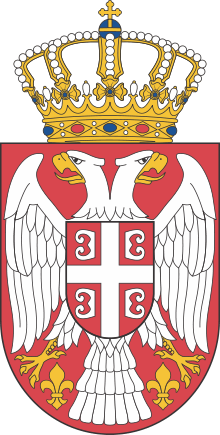Pančevački Rit

Pančevački Rit (Serbian Cyrillic: Панчевачки Рит) is a small geographical area in south-western Banat, Serbia. It is situated between the rivers Danube and Tamiš, in Belgrade's municipality of Palilula.
Features
Its 400 km² wetland was constantly flooded, but since World War II it has been drained part by part and almost half of it has been turned into a very fertile patch of land, suitable especially for cultivating grains and vegetables. It is managed by Serbia's largest agricultural company, "PKB Beograd", which almost exclusively provides food for 2 million people in the greater Belgrade area; thus Pančevački Rit is commonly nicknamed Granary of Belgrade. Stockbreeding is also very intensive, as are fishery and hunting.
Many meandering canals and bogs have remained in the marsh: the slow streams of Vizelj, Dunavac, Sibnica, Butuš, Rogoznica, Buk, Belanoš and Sebeš, and large bogs of Reva, Veliko Blato (2 km²), Sebeš and Široka Bbara. In the south, the area ends with a river island (ada) Kožara (0.44 km²) and the southwest is occupied by the wetland of Beljarica.
Wildlife
The marshland is the natural habitat for the wild boars and Pančevački Rit is the location of the largest population of the wild boars on the territory of Belgrade, and probably in the entire Serbia. They are especially numerous in the area bounded by the Pupin Bridge, Crvenka, Borča and Padinska Skela. In the previous decades, as the settlements expanded, boars' natural roaming paths have been intersected by the houses or roads. As the area is agricultural, they feed on the crops (wheat, corn) and roots, but also on the fish and shells so many are found on the banks of the Danube.[1]
There are two official, unfenced hunting grounds in Pančevački Rit. One is named the same way, while the other is called simply Rit. The Rit is located near Padinska Skela, 15 km (9.3 mi) from Belgrade along the Zrenjaninski put. It covers an area of 82.63 km2 (31.90 sq mi), of which 0.5 km2 (0.19 sq mi) is a pheasantry. Animals bred in the facility include roe deer, hare, quail, mallard, greylag goose and 13,000 pheasants per year.[2]
Neighborhoods and settlements
After being almost uninhabited before 1945, today its population density is above average for Serbia as a whole, since some of the fastest growing suburbs of Belgrade (Borča, Padinska Skela and Krnjača) have been built there.
Neighborhoods of urban Belgrade in the Pančevački Rit:
Settlements and neighborhoods of suburban Belgrade in the Pančevački Rit:
History
The area had its own municipality in 1955-1965 (until 1955 it had four municipalities: Borča, Ovča, Padinska Skela and Krnjača which merged into one municipality, Krnjača, in 1955 which in turn was annexed to Palilula in 1965).
Politics
Today, there is a proposal that area again become a separate municipality with the name Dunavski Venac. Beginning in the late 1990s, the notion of the area on the left bank of the Danube splitting from the municipality of Palilula had been gaining momentum until in 2005 the Municipal assembly of Palilula finally accepted supporting the move. The proposed new municipality, if accepted and confirmed by the Belgrade City assembly, will have an area of 407 km² and a population of 70-80,000.
See also
References
- ↑ Branka Vasiljević (8 September 2017), "Divlje svinje dolaze iz Pančevačkog rita", Politika (in Serbian), p. 14
- ↑ Branka Vasiljević (5 August 2018). "Lovci u Beograd stižu porodično" [Hunters travel to Belgrade with their families]. Politika (in Serbian).
